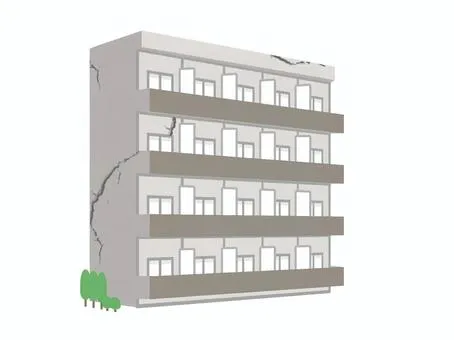The Miyazaki-Hyuganada earthquake occurred on 8/8 before Bon Festival, and the day after that, an earthquake occurred in western Kanagawa, where I have an office. In the earthquake in western Kanagawa, tombstones fell in neighboring cities, and there was damage where part of the wall peeled off at my parents' house. Large-scale earthquakes have occurred continuously, and it is feared that an earthquake in the Nankai Trough will occur.
By the way, a little while ago, I participated in the “House Damage Certification Survey” for 4 days to support disaster-stricken areas related to the Noto Peninsula earthquake in early June.
At that point, 5 months had already passed since the earthquake occurred, but many collapsed buildings remained untouched, and the “Wajima Morning Market,” where a large-scale fire occurred, had just begun removing debris. The main road was only temporarily restored, and there were also steps due to ridges and temporary pavement, so it was necessary to be very careful when driving at night.
Some harsh opinions from local people were also heard about the administrative response of the countries/prefectures, etc., but in addition to those in charge of this prefecture and municipalities, people in charge of prefectures and municipalities in other prefectures are also working day and night to support disaster victims, and support activities themselves are progressing steadily. Also, in the midst of intense heat this August, real estate appraisers not only within the prefecture but also from other prefectures are working on housing damage certification investigations on the Noto Peninsula.
Nevertheless, is it said that reconstruction support is slow? I think there are various reasons, but “breaking away from a construction-oriented nation” is probably the biggest factor.
Certainly, it is undeniable that the Showa “construction-oriented nation,” which relied heavily on the civil engineering and construction industry, had problems, such as creating many buildings like “boxes” that were underused and became a financial burden. However, the number of construction workers is on a downward trend, peaking at 6.85 million in 1997, and is 70% of the peak at 4.83 million in 2023. I believe that excessive “breaking away from the construction nation” spurred a decline in construction workers called 3K workplaces. I think this decline has had an effect on delays in construction of the Osaka Expo, and furthermore, delays in earthquake reconstruction.
If you look at construction sites in the Tokyo metropolitan area, you can see many foreign workers, mainly from the Asian region. There is also an effect of serious labor shortages, and it is probably unavoidable, but since there is also a language barrier, I think there is a problem in terms of ensuring construction safety and construction quality.
As a solution, It’s a cliché, but I think it is an early improvement in working conditions to deal with 3K(harsh,dirty,dangerous). To achieve this, improvements of contracts with client is needed.
.webp)
Reprinted from Movable Property Management Journal Co., Ltd. “Weekly Real Estate Management” (with permission)


.webp)
.webp)
























